How well do you know your eggs?

Did you know? According to Healthline.com...
Egg color depends on the breed of the chicken. For example, White Leghorn chickens lay white-shelled eggs, while Plymouth Rocks and Rhode Island Reds lay brown-shelled eggs (Source 1, 2)
Several studies have found that shell color has no significant effect on egg quality and composition (3)
Oops, I ALMOST bought the same colored egg yolks!
One carton is labeled organic, pasture-raised eggs. The other carton is labeled free-range eggs. (Open Nature is the brand name and has nothing to do with the type of egg).
The two egg carton labels are clearly different, with distinctive keywords labeled to help consumers differentiate the type of egg they were going to purchase.
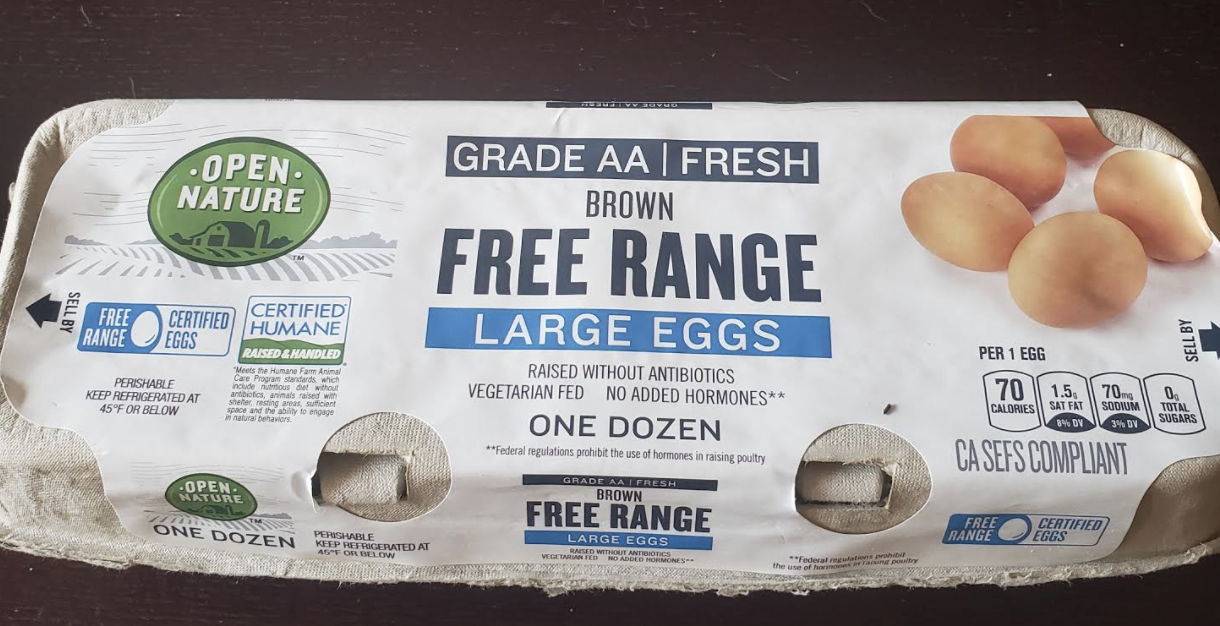
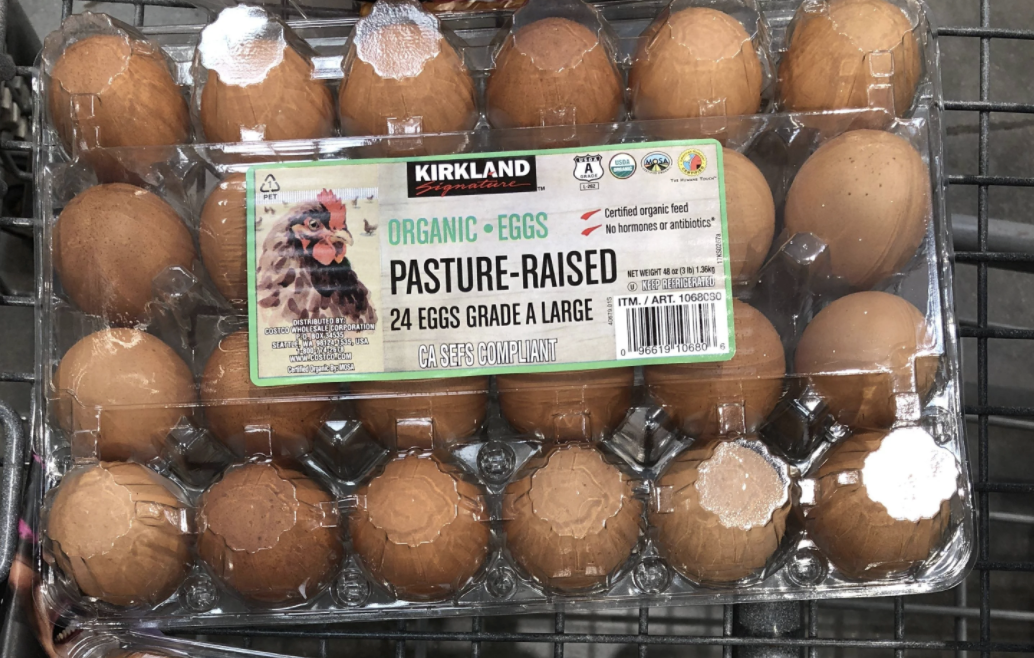
The color of the egg yolk from both carton are both yellow but the Organic, Pasture-Raised Egg is deeper in yellow
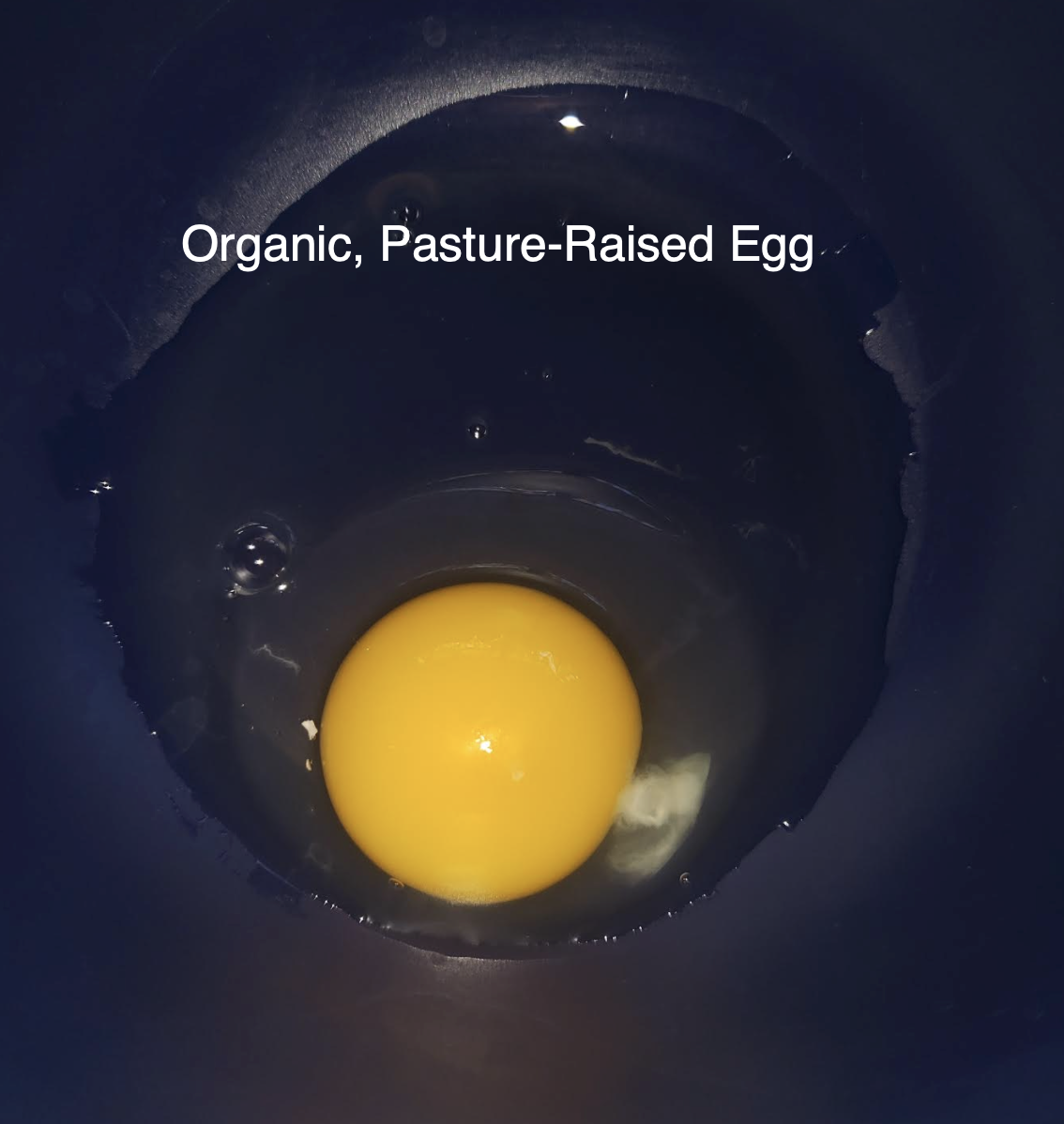
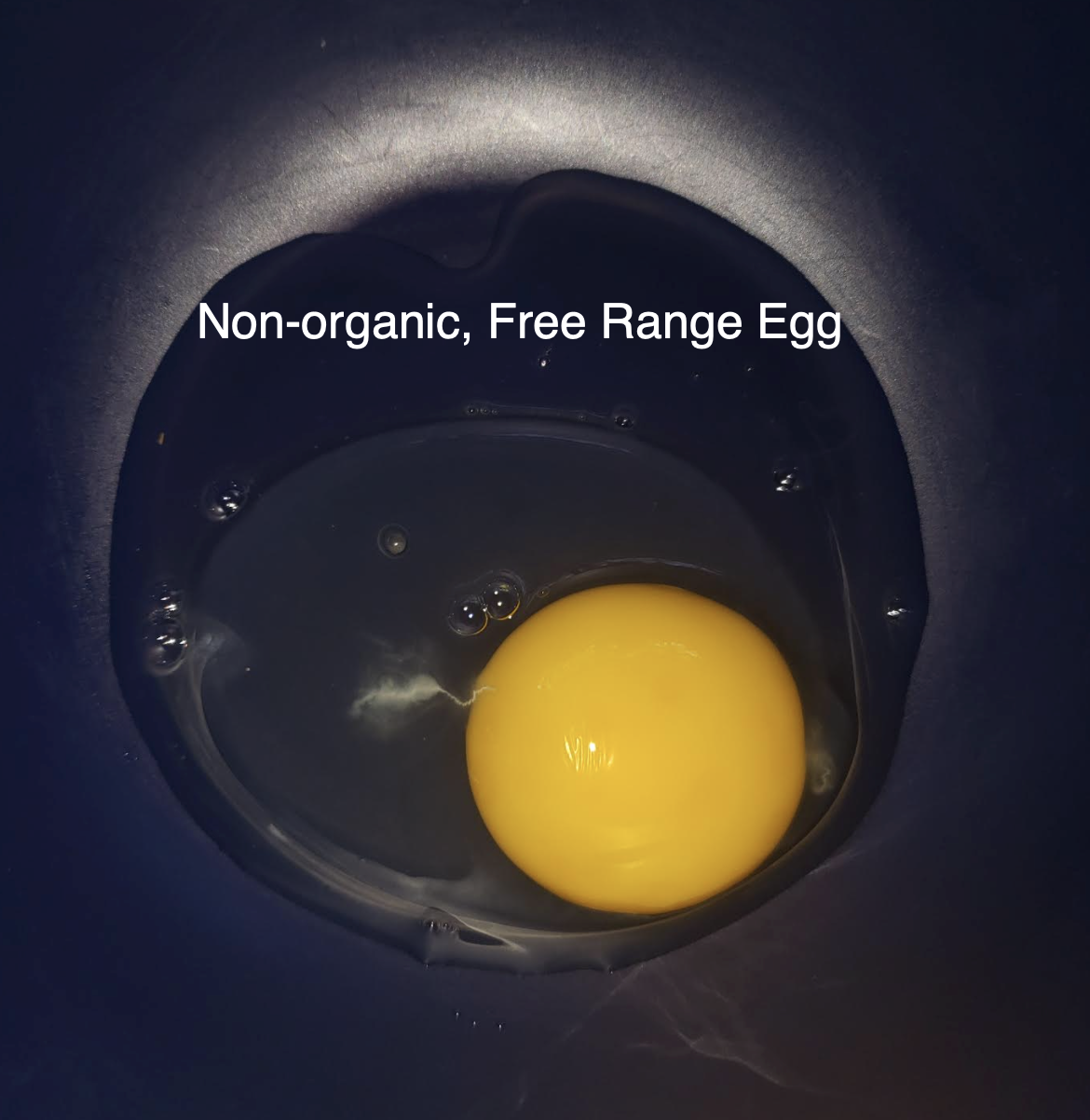
Honestly….
I thought the non-organic, free-range carton of eggs would have a lighter or more yellower egg-yolk behind the brown-colored shell.
I am going to make it easier for you to compare the egg cartons without using too many words. You can view the comparison chart I created below to evaluate yourself.
I want to extend the opportunity for you to be a smarter consumer when it comes to the type of eggs you like to eat.
I’m sure that many consumers are confused as they walk down the aisles of their local grocery store with only their ‘this is what I grew up on’ lens and wanting to save a few dollars to end up with a lower quality carton of eggs.
Note: I am not an egg expert. I am a learner and this is what I’ve learned about the various eggs. There is more in-depth analysis of each category out there in the WWW. If you prefer this type of learning, then please find Google them.
To help you quickly compare my two carton of eggs with cage-free and commercially-farmed eggs in the United States(EU countries have slightly different standard):
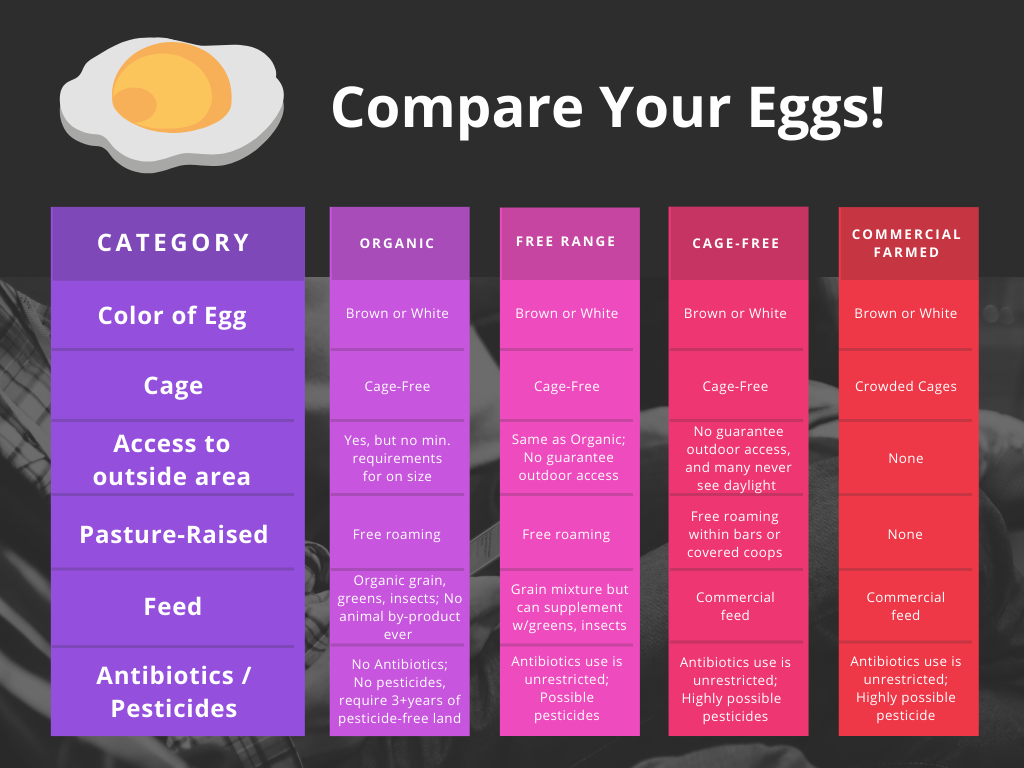
What is the difference between organic and non-organic eggs?
First and foremost, to receive the USDA organic stamp, farmers will need to pass this set of requirements. Naturally, meeting a higher set of standards could be inferred as a higher quality product. This stamp confirms this hypothetical.
According to DovMed.com
Organic food certification is a self-regulated term depending on the national government that regulates it. In the United States, organic foods must not have any artificial food additives or genetically modified ingredients. In addition, organic foods must refrain from artificial methods, materials, and conditions like chemical ripening and food irradiation. Organic farmers can use pesticides as long as they are not synthetic. However, if pests and weeds are too difficult to manage through organic pesticides or herbicides, synthetic substances that are approved on the National List of synthetic substances can be used.
Heathline.com: https://www.healthline.com/nutrition/white-vs-brown-eggs#TOC_TITLE_HDR_3
DovMed.com: https://www.dovemed.com/healthy-living/wellness-center/are-organic-eggs-healthier-regular-eggs/
Source 1: https://pubmed.ncbi.nlm.nih.gov/22742508/